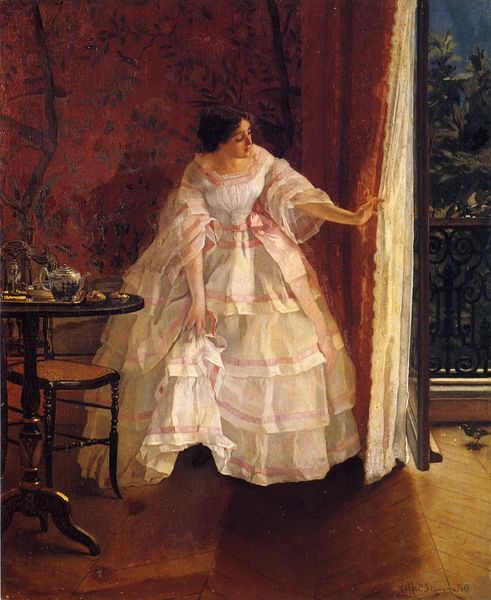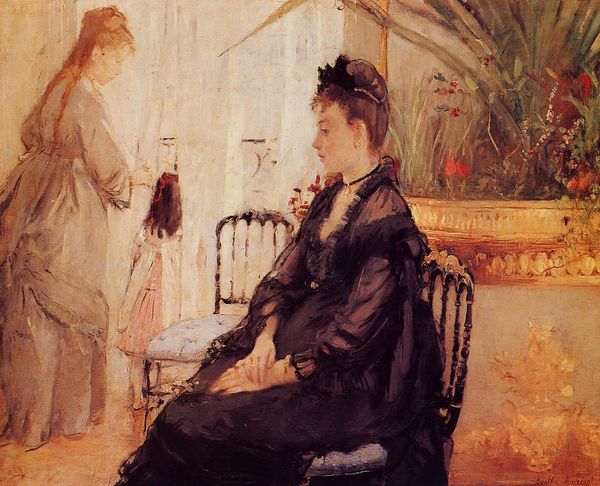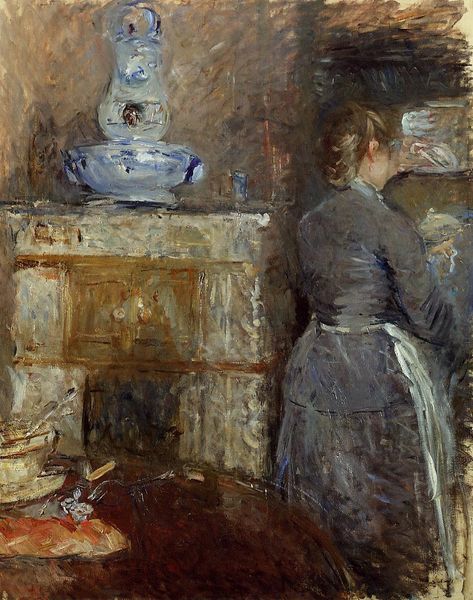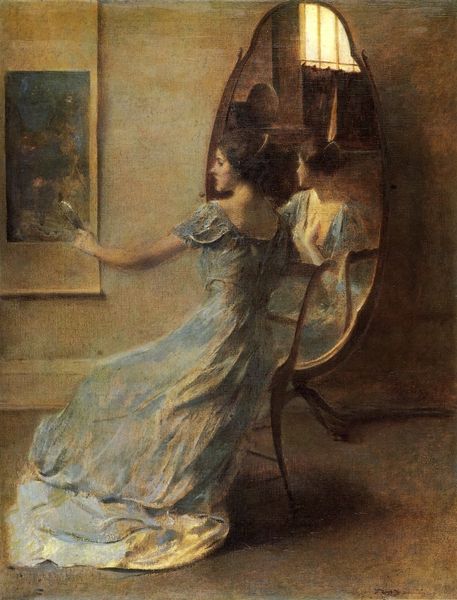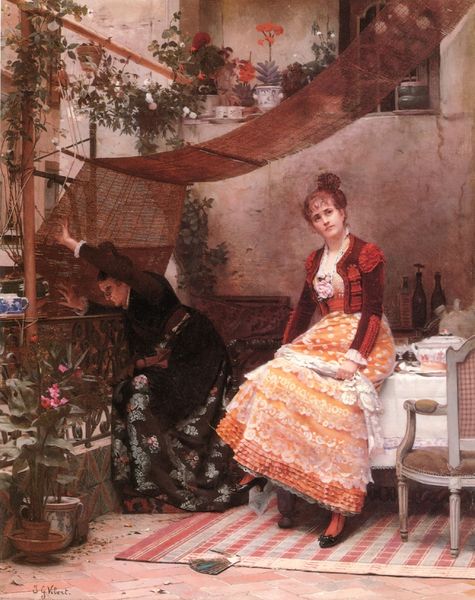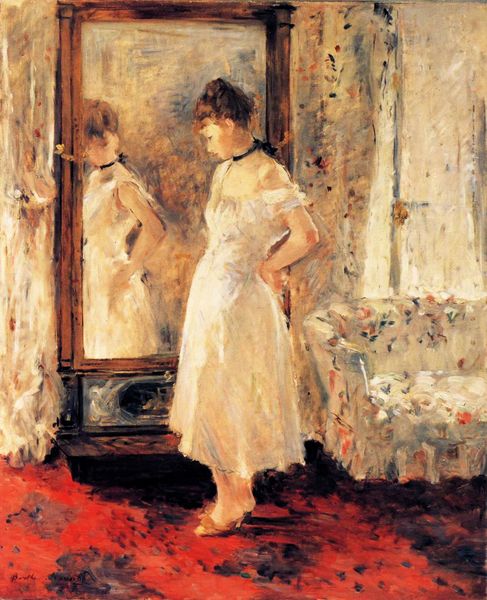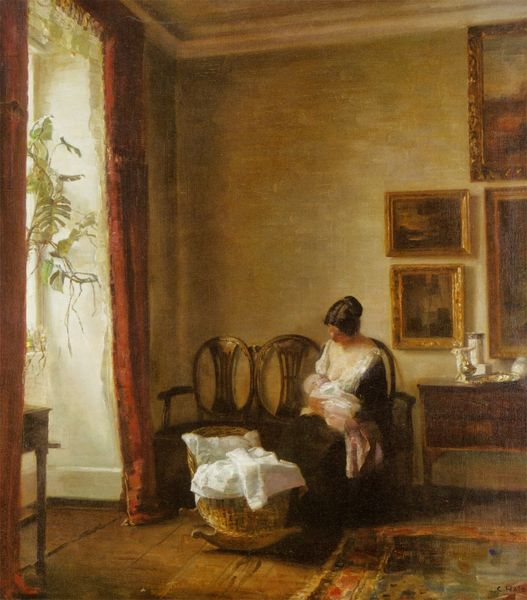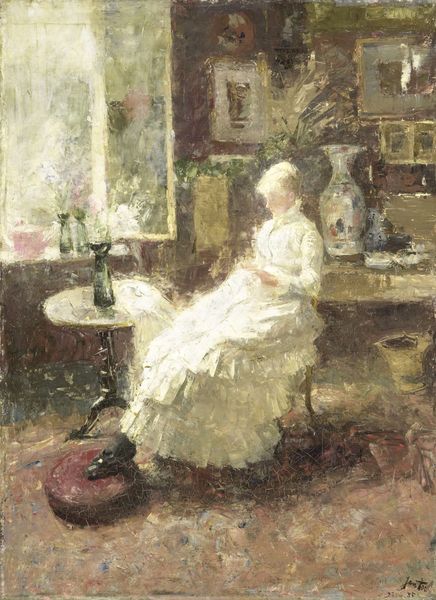
Copyright: Public domain
Editor: Here we have Tom Roberts' "Jealousy," an oil painting from 1889. It depicts a woman looking away from an open doorway with a sorrowful expression. What strikes me is the clear narrative being presented, this feeling of tension. What do you see in this piece from a historical perspective? Curator: It's interesting to consider this work within the context of late 19th-century Australian art, and its connection to European trends. Roberts, while Australian, was heavily influenced by Impressionism and academic painting styles of Europe, and works such as this can offer insights into how cultural values and social anxieties were visualized and consumed in Australia. Do you notice the framing device used? Editor: Yes, I do. The figure in the foreground is contrasted with a romantic encounter visible in the doorway. It feels as though we are actively watching this story unfold, which enhances the feeling of the “tableau vivant.” Is that the kind of sentiment that might have been intended? Curator: Exactly. The concept of ‘Jealousy’ itself becomes a commodity, a spectacle displayed for our consumption. But beyond that, think about the exhibition culture of the time. Works such as "Jealousy" were not simply artistic expressions but contributions to an artistic ecosystem shaped by institutions, patrons, and audiences. Do you think this adds depth to understanding the work? Editor: I can appreciate that angle and how thinking about an artwork this way offers insights into its role in society. It reveals how artistic value and social messages are intertwined. Curator: Indeed. Examining the painting this way really drives home the public function of art in shaping perceptions. Editor: It changes how I look at paintings. Thinking about it being this piece in a larger social narrative as opposed to a snapshot. Curator: Precisely, that context offers valuable ways of relating to the work and its possible historical intent.
Comments
No comments
Be the first to comment and join the conversation on the ultimate creative platform.

